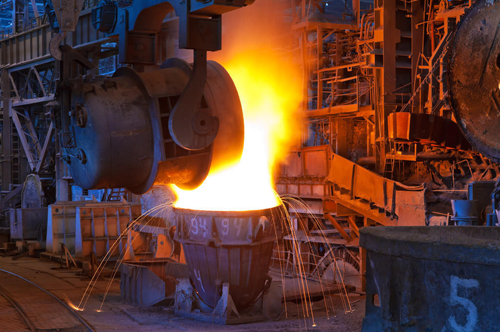
The steel making process starts with the crushing and sorting of raw iron to ensure the highest quality of iron. The iron ore is then loaded in a blast furnace and the hot air from the bottom cleans the iron from impurities. This molten iron is then drawn off and further heated. Manganese is then added to the finished product.

A primary steel making process involves the use of furnaces to melt and refine molten steel. Slags are formed during this process. They are the remains of molten metal and can have various properties. Some of them are metallic, while others are composed of ionic solutions. They act as barriers against atmospheric oxidation and heat. Various processes are used to refine the slags.
While we know that the steel industry was around in ancient Rome, Greece, and the Mediterranean region, the exact method used by ancient producers is uncertain. Some scholars believe that the steel produced in ancient times was carbon steel, which was later made into alloys. The process of tempering involves incorporating carbon into iron, and this carbon is what hardens iron.
The process of making steel starts with the mining of ore and the melting of molten iron. The molten iron contains about four to five percent carbon and is then mixed with other raw materials and melted in a blast furnace. The iron and the dissolved gases then pass through a lance and are mixed together. The final product is known as BOS.
Sintering is the process of agglomerating iron ores, fluxes, coke, and other materials into a form that is able to withstand pressure in the blast furnace. The resulting sinter typically has a screened size between 10 to 30 mm.
The steel making process involves using coal to produce coke. Coal is a heterogeneous material with varying properties. Even within a seam, properties vary. As a result, the process requires coal with the proper consistency. Coal blending helps ensure consistency and improves the quality of the product.
Slag is a component of the steel making process. It is a mixture of finely grained grains with an average grain size of 2 to 25 mm. Slag varies in gradation according to the material's density, which increases with the number of cycles the slag is subjected to. Its mechanical performance is measured by a test known as cyclic bearing capacity (CBR).
The process of steel making begins with the processing of iron ore and scrap iron. These materials are converted to molten steel by using a blast furnace or an electric arc furnace. The molten steel then pours into a continuous caster and undergoes further processes to create semi-finished products. These products can include billets, slabs, blooms, and square cross-sections. Some of the steel products may then be heat-treated before being used to form the finished product.
The global market for scrap steel is set to grow at a CAGR of 3.4% over the next seven years. It will exceed 50 million metric tons in 2020, and the U.S. is expected to account for nearly half of this amount. By 2026, China will account for about half of this total, with its market forecast to reach 301.7 million tons. Other major players in this market are the European Union, Japan, Canada, and China.

Write a Message